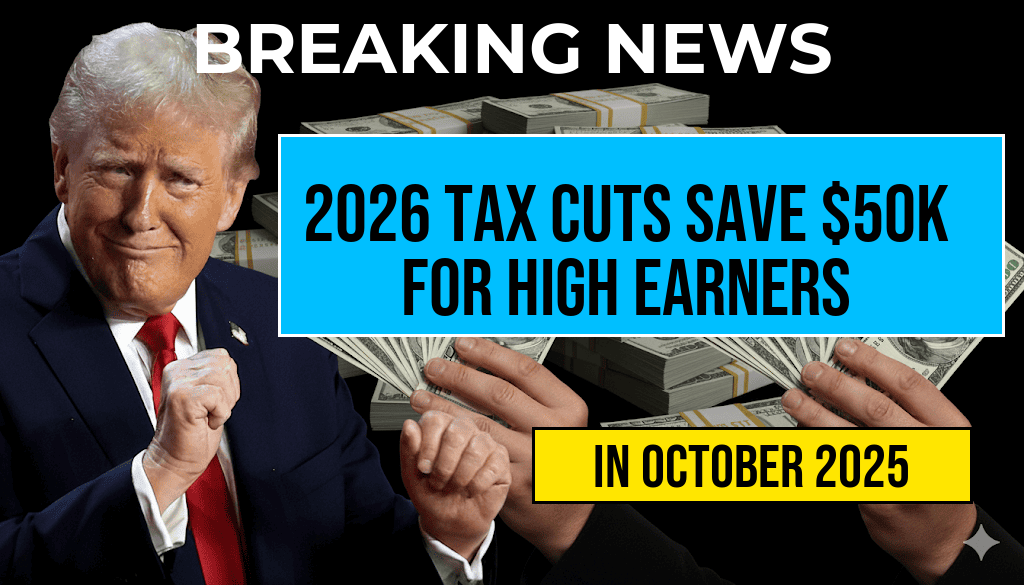Projected 2026 Tax Brackets Signal Significant Relief for Middle-Income Earners
A forthcoming overhaul of the U.S. tax brackets set for 2026 could lead to substantial savings for middle-income earners, particularly those earning around $50,000 annually. Under the new proposals, the top income tax rate might drop to as low as 12% for certain income ranges, representing a notable reduction from current levels. For individuals in this bracket, the change could translate into hundreds of dollars saved each year, especially as the government adjusts thresholds to reflect inflation and economic shifts. These adjustments aim to make the tax system more progressive and responsive to real income gains, potentially easing the tax burden for millions of Americans. As policymakers debate the details, analysts warn that such reforms could influence broader fiscal strategies and economic growth trajectories.
Understanding the Proposed 2026 Tax Brackets
The proposed revisions to the tax brackets are part of ongoing efforts to modernize the federal tax system. Key features include lowering the highest marginal tax rate for middle-income earners and realigning income thresholds to prevent bracket creep—where inflation pushes taxpayers into higher brackets without actual income increases.
- Lower Top Rate: The top income tax rate could decline from 24% to 12% for certain income levels, particularly benefiting earners around the $50,000 mark.
- Adjusted Thresholds: Income brackets are projected to be increased to reflect inflation, preventing taxpayers from being pushed into higher rates solely due to rising prices.
- Impact on Taxpayers: For a typical $50,000 earner, the reduction could mean paying hundreds less annually, depending on their specific income composition and deductions.
Projected Savings for a $50,000 Earner
Using current and projected tax rate structures, financial analysts estimate that an individual earning approximately $50,000 could see significant savings—potentially exceeding $300 annually—once the new brackets are in effect. The exact amount varies based on deductions, filing status, and other factors, but the trend indicates a move toward easing the tax load for middle-income households.
| Income Range | Current Tax Rate | Projected 2026 Tax Rate |
|---|---|---|
| $40,000 – $85,000 | 22% | 12% (for portions of income) |
| $85,001 – $170,000 | 24% | Potentially 22% or lower |
Sources such as the IRS provide detailed information on current brackets ([IRS Tax Brackets](https://www.irs.gov/newsroom/irs-provides-inflation-adjusted-amounts-for-tax-year-2024)) and the potential impacts of reform proposals.
Economic and Policy Considerations
Advocates for the reform argue that these adjustments could stimulate economic activity by increasing disposable income for middle-class households. Reduced tax rates may encourage increased consumer spending and savings, potentially boosting economic growth. Conversely, critics caution that lowering top rates might reduce federal revenue, possibly affecting funding for public services and programs. Policymakers are balancing these concerns while aiming to create a more equitable tax system that reflects actual income gains rather than inflation-driven bracket creep.
Implications for Broader Tax Policy
The move toward lower marginal rates for middle-income Americans is part of a broader conversation about tax fairness and economic competitiveness. If enacted, these changes could set a precedent for further reforms, including adjustments to capital gains taxes, estate taxes, and corporate rates. As discussions continue, experts suggest that a focus on simplifying the tax code and ensuring adequate revenue will remain central to policy debates.
For more detailed insights on how tax reforms influence economic behavior, consult resources like [Forbes](https://www.forbes.com) and [Wikipedia](https://en.wikipedia.org/wiki/Taxation_in_the_United_States), which analyze the broader implications of fiscal policy shifts.
Looking Ahead
While the specifics of the 2026 tax brackets are still subject to legislative approval, projections indicate that many households could experience tangible financial relief. The anticipated reduction in the top rate to 12% for certain income levels underscores a potential shift toward a more progressive and income-responsive tax system. As the legislative process unfolds, taxpayers and policymakers alike will be watching how these changes unfold and impact the economic landscape in the years ahead.
Frequently Asked Questions
What are the projected changes to the 2026 tax brackets?
The projected 2026 tax brackets are expected to lower the top rate to 12% for certain income levels, which could significantly benefit earners, especially those around the $50,000 income mark.
How will the new tax rates impact someone earning $50,000?
For a $50,000 earner, the reduction in the top tax rate could result in hundreds of dollars in savings, increasing their real income gains and overall take-home pay.
When are these tax bracket changes expected to take effect?
The projected changes to the 2026 tax brackets are anticipated to be implemented starting with the 2026 tax year, providing taxpayers with potential benefits beginning in early 2026.
What is the significance of a lower top tax rate for high earners?
A lower top tax rate means that high earners will pay less in taxes on their income, which can lead to increased net income and more disposable income for investment or savings.
Are these projected tax changes certain to happen?
These changes are based on projections and current policy discussions, so while they are likely, they are not yet guaranteed until officially enacted by legislation.

Leave a Reply